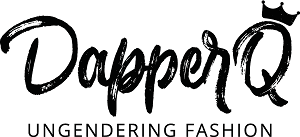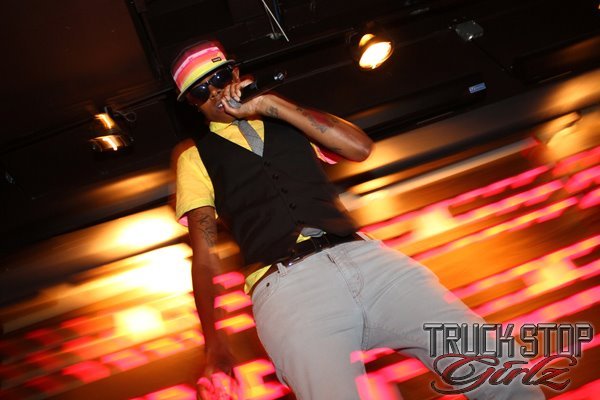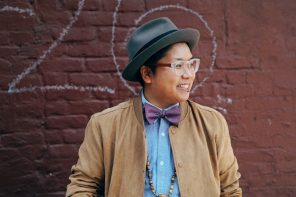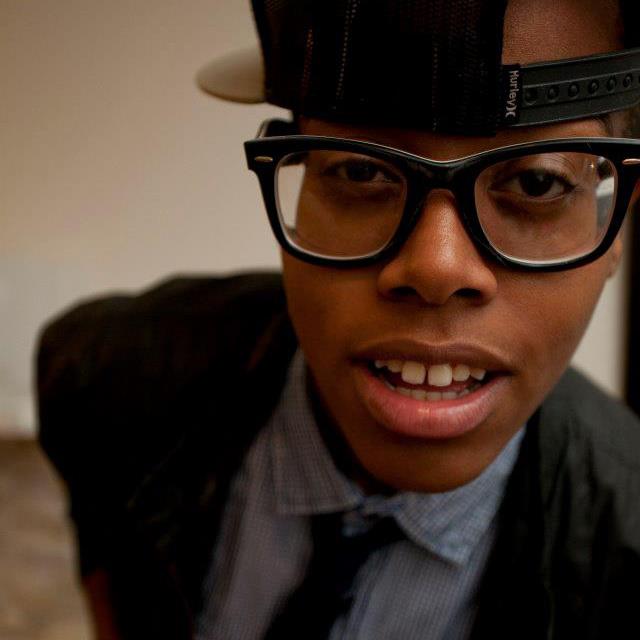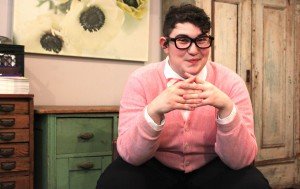*Feature image by Tiph Brown
We are told that fashion happens when clothing is bought and sold, on display, snap shot, formal or flamboyant, fabulous. But understanding fashion as merely a commercial exchange or an aesthetic sensibility forecloses the possibility that it might do something else; that it might emerge from somewhere else. Fashion is what we refuse to wear as much as what we choose to wear, are forced to wear, can afford to wear. Fashion can be the anticipation of an outfit and the sound of affirmation or harassment that receive it. Fashion can happen in debt, in dislocation, in self-defense.
This insight is not new. And yet, when presidential candidates speak of carpet-bombs and super-predators, when poison is profitable and profiling is policy, it becomes necessary to consider fashion in the context of empire. And in light of recent contagion scares, where the transnational movement of Black and brown bodies are made to symbolize illness or its possibility, visual markers of disability and gender variance arouse heightened suspicion and accusations of masquerade.
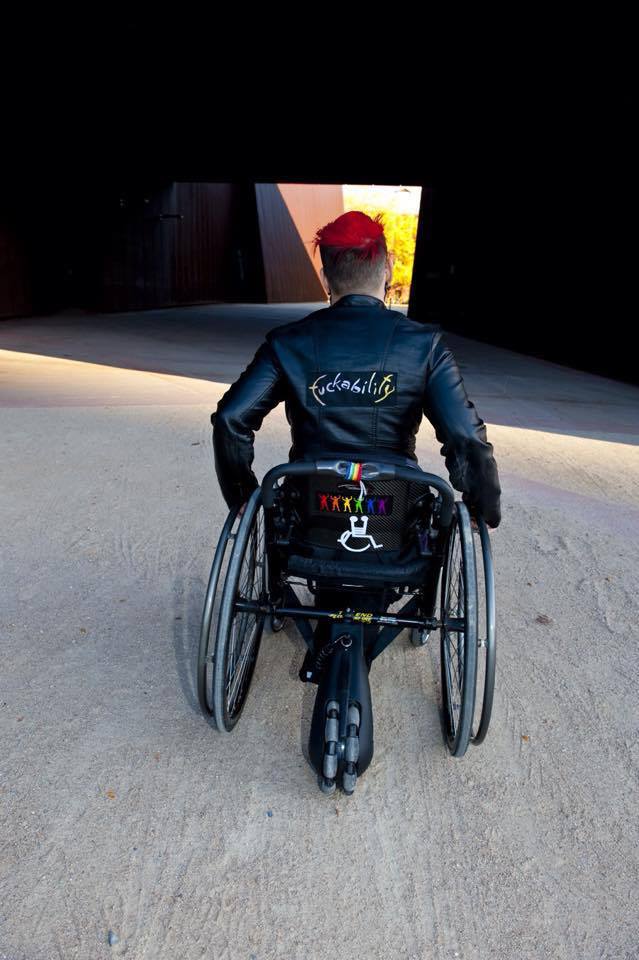 Photo Credit: Paul Dunn
Photo Credit: Paul Dunn
In response, queercrip aesthetics can be the occasion for survival work; revoking, re-routing and disrupting dominant understandings of how bodies move, how bodies breath, how bodies are held and are in holding. The models below — Kay Ulanday Barrett, Sukie Glick, QueenTite, Syrus Marcus Ware, and Jax Jacki Brown — evoke multiple queercrip encounters: the interweaving of ancestry and accessibility, the ongoing medical surveillance by and within queer and transmasculine communities and the colonial hauntings that inform who and what is deemed fashion-able. In turn, the artists, writers, cultural workers and community members involved in this project engage fashion as a way of longing. A way of being together without a prescription for repair, without an end plan, in love, in suffering, in memory, in rehearsal.
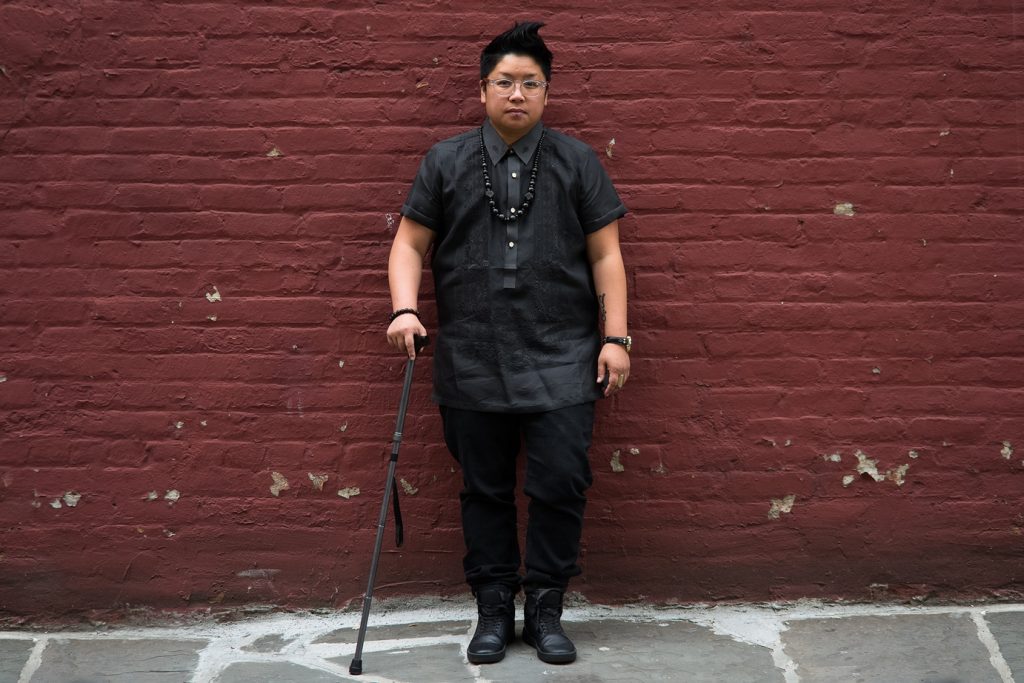 Photo Credit: Tiph Brown
Photo Credit: Tiph Brown
Kay Ulanday Barrett: If you look up hashtags: #ftm, #transmen #TMOC #selfmademan, there’s an obsession and emphasis on able-bodied thinness and fit masculinity. Every time I peruse those hashtags it assumes a masculinity that feels cut and paste, feels closer to colonial conceptions of brown cis binary masculinity uninteresting to me. Spoiler alert: The RUN! JUMP! SWIM! WOOHA! bro archetype doesn’t make anyone more trans and isn’t everyone’s life.
White supremacy and eugenics have informed us that there’s a specimen of brown masculinity and migrant masculinity that is only worthy if it can achieve labor and physical laborious tasks for white capital. Brown cis men can lift, move, carry cargo and for cis straight white American elite, then you can stay, you can be here among us, just close enough to be almost human. Fit these scripts and you are a real man. This is how my uncles, cousins and cis men in my brown family learned the American dream. Be useful in the fields, wiping up tables, carrying the luggage of rich white Americans and here, you can live a life at the helm of bootstraps. However, if your body or mental health capacity doesn’t fit in this schema, if you are tender or not extrovert or loud, what then? Have we internalized that humanity in brown and black masculinity is more valuable the closer we are in proximity to white thin colonial muscularity? I think so.
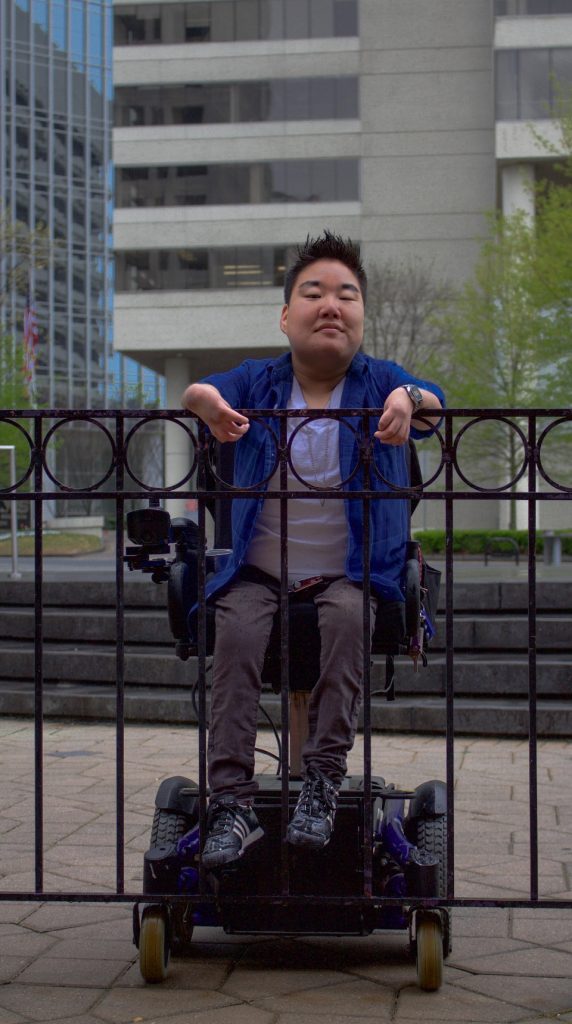 Photo Credit: Alex Knight Espinosa
Photo Credit: Alex Knight Espinosa
Sukie Glick: I don’t have a standard body and I don’t use a standard image of what masculine is supposed to be. I’m not in hot pursuit of top surgery or any type of surgical procedure.
I actually had someone look at me once and say, “You dress really well for a person who uses personal care attendants.” Why would that limit my style or fashion? I’m not inspiration porn. I think about fashion often. There’s a stereotype that people with disabilities don’t care about their appearance. That’s just not true. I’m not putting my own clothes on, but I know what I want to wear and how fucking good I want to look!
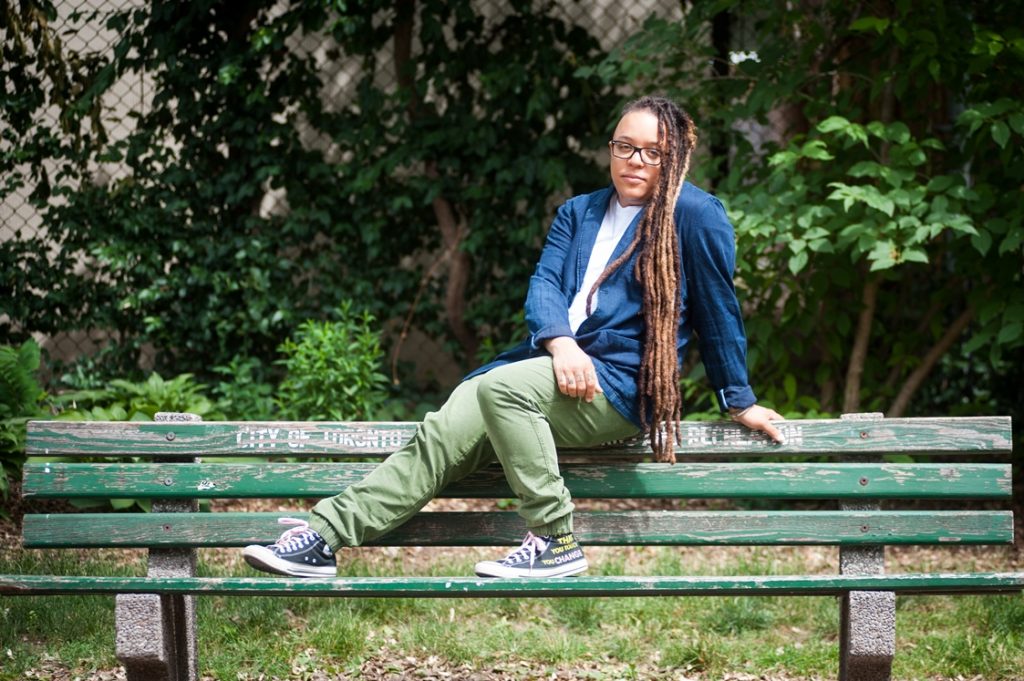 Photo Credit: Zoë Gemelli
Photo Credit: Zoë Gemelli
Syrus Marcus Ware: As disabled trans people of color, we are often compared to white, cis, able-bodied norms and also to the norms of white, trans, able bodied guys. A lot of the trans fashion/style mags don’t really speak to me or my communities, because they showcase these norms exclusively. Chiselled, thin, white trans guys who pass, wearing expensive suits and drinking bourbon!
The reality is that we may never choose to/ be able to afford/ be considered eligible for surgery or hormones. We may never want to flex/ be able to afford a bespoke three piece suit. Or we may! We should all get to choose, and have options that work for us and that are accessible should we choose these options. I want to be able to celebrate our differences and the variety of our shapes and sizes and ways of being. I don’t want to be held up against an unrealistic white homonormative version of masculinity.
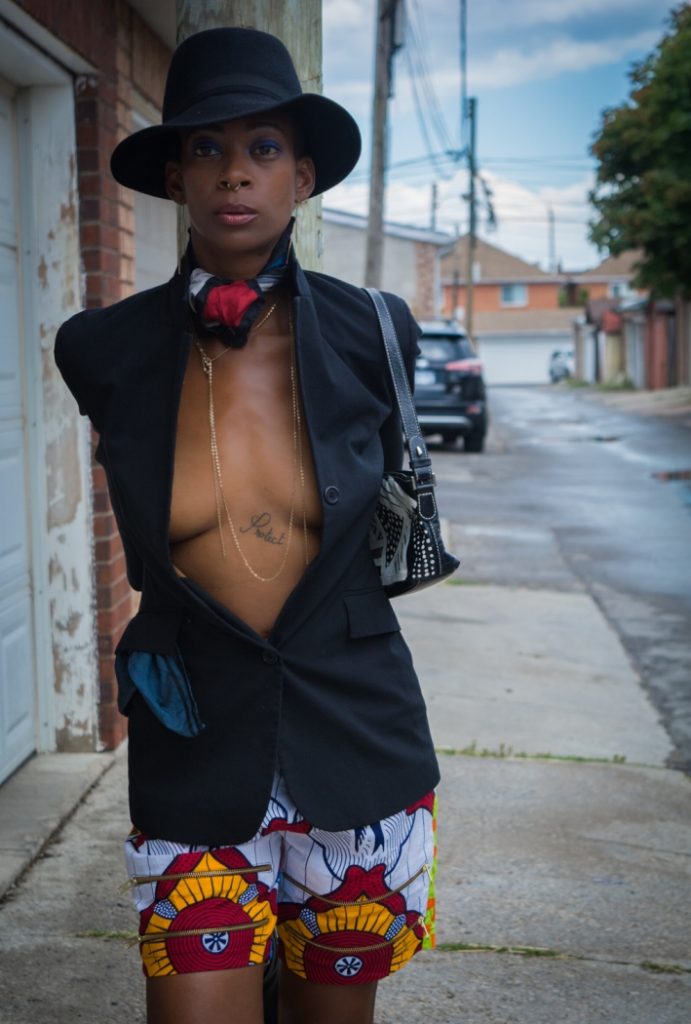 Photo Credit: Shawntol Drakes
Photo Credit: Shawntol Drakes
Queen Tite: I describe my style as a mixture of androgynous Nubian Funk. Fashion is non-verbal communication. I speak with my clothing, my vibe in that attire, and pure confidence in my self-expression. I express my androgyny by pushing the boundaries of who I am and can be. At times masculinity is my armor. Though I love my curves, my breasts, my flaws, I don’t want those assets on display. I want them protected and selectively shared.
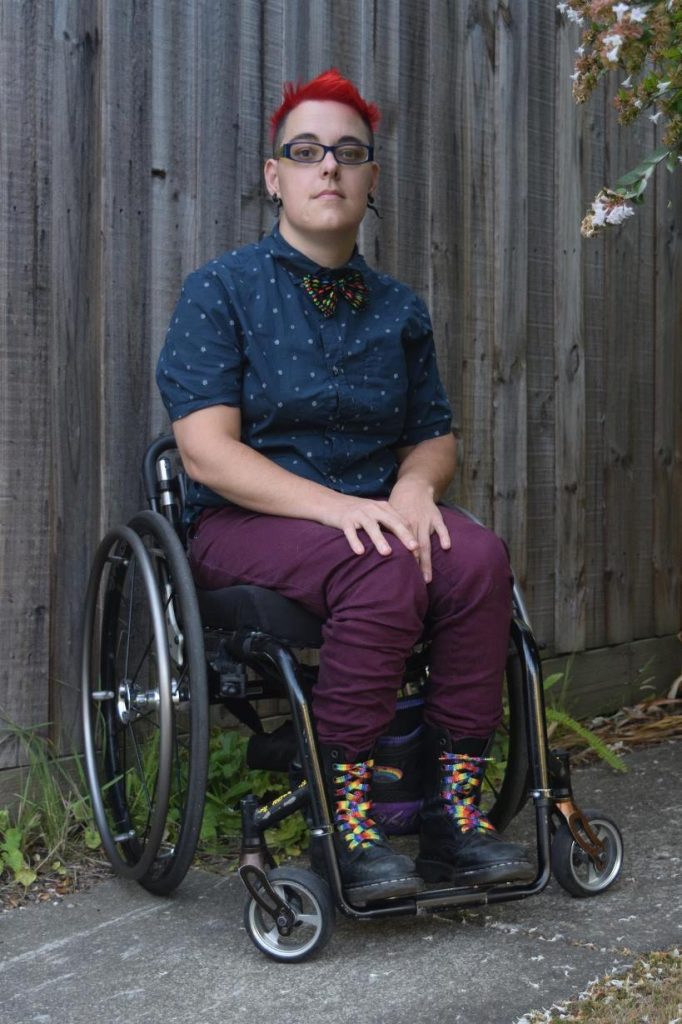 Photo Credit: Anne Standen
Photo Credit: Anne Standen
Jax Jacki Brown: Masculinity shouldn’t be about muscularity, strength and physical prowess. For me, it’s about a bodily feeling of wearing clothes that make me feel right in my own skin; comfortable in the world and signaling parts of me that are really important. By consciously performing masculinity in a queer disabled body it shows that masculinity is broader than we sometimes assume. There isn’t a fixed point of masculinity as opposed to femininity, it’s not a binary and so there isn’t one way of expressing or embodying it. My signaling of masculinity is not always read as such. A sexual identity cannot, in the minds of many non-disabled people, exist in the presence of disability, so I am often read as a punk, or deemed “confused” instead of seen to be deliberately signally queer sexuality and destabilizing gender norms and expectations.
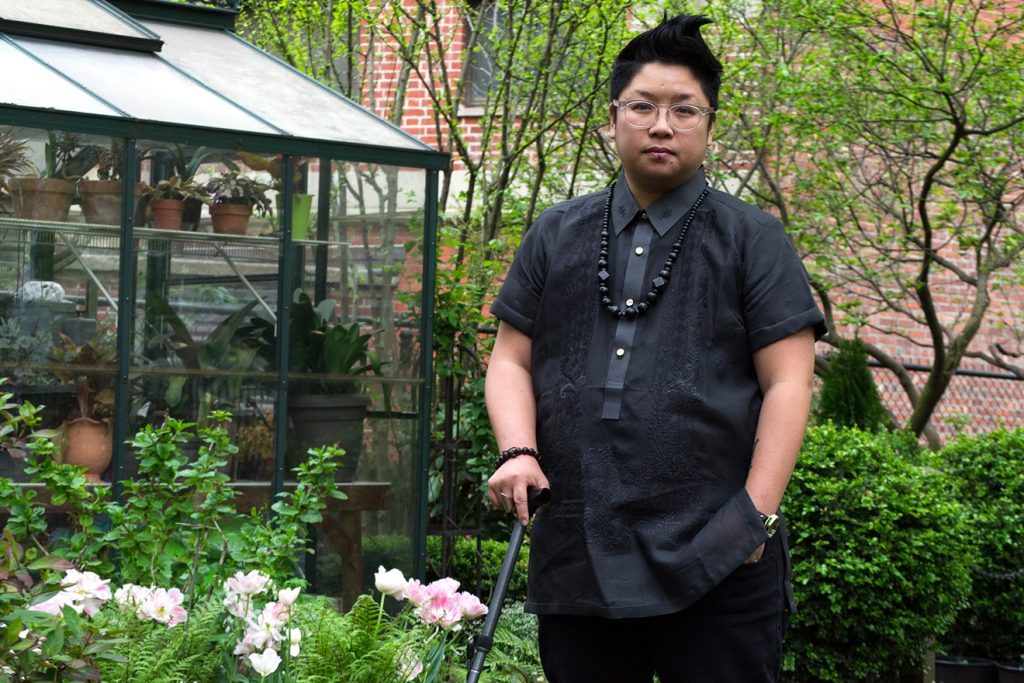 Photo Credit: Tiph Brown
Photo Credit: Tiph Brown
KUB: I’d consider my look to be homeboi switchy homeland swag on a budget. My aesthetic is based on a host of factors like safety, cost and size. From the beads around my neck to the click of my cane, I use patterns and themes that remind me of my homeland, of my brown culture, of my lolo and titos, of the kid who was beat up in the 90s for dressing what was classed as poor and a place of ridicule with loud ass colors but now, said looks have been burgeoned as nostalgically hip by white and rich people alike. My fashion, like my food, helps me chart back to my culture, helps me connect to ancestors and puts me in conversation with them. What if my lolo were here — what would he think of this fedora bargain on sale? He’d rock it and without stretching his pockets, I bet. Textures are my life! Bring on the texture I say — leopard print, snakeskin, various text statements.
There’s flyness in fashion — it can be exuberating to feel yourself reflected in a cultural experience. I feel that my aesthetic is a cultural strategy to stay alive and to carve out a space of flyness that is so unique that no store can reproduce. That kind of gutsy hope, I learned with others of my experience. Queer and poor people inspire fashion, so often are our looks co-opted, the crip and SDQ (Sick and Disabled Queer) origination of fashion is inevitable and has been happening.
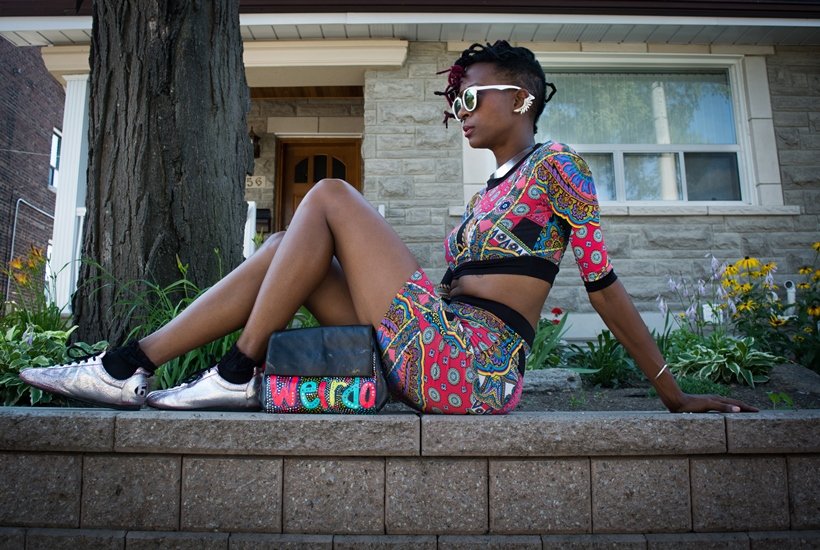 Photo Credit: Shawntol Drakes
Photo Credit: Shawntol Drakes
QT: I was born with club feet and had both legs broken to straighten them. Pain for me is associative to my feet, knees, and legs. Though I’m almost 6 ft. tall I have a secret love for heels yet my body barely allows it. Instead of seeing a loss of something I started incorporating funky socks, sneakers, boots, sandals, loafers, stockings, anything flat really to accentuate my style. This way my body still gets its required support while looking stylish.
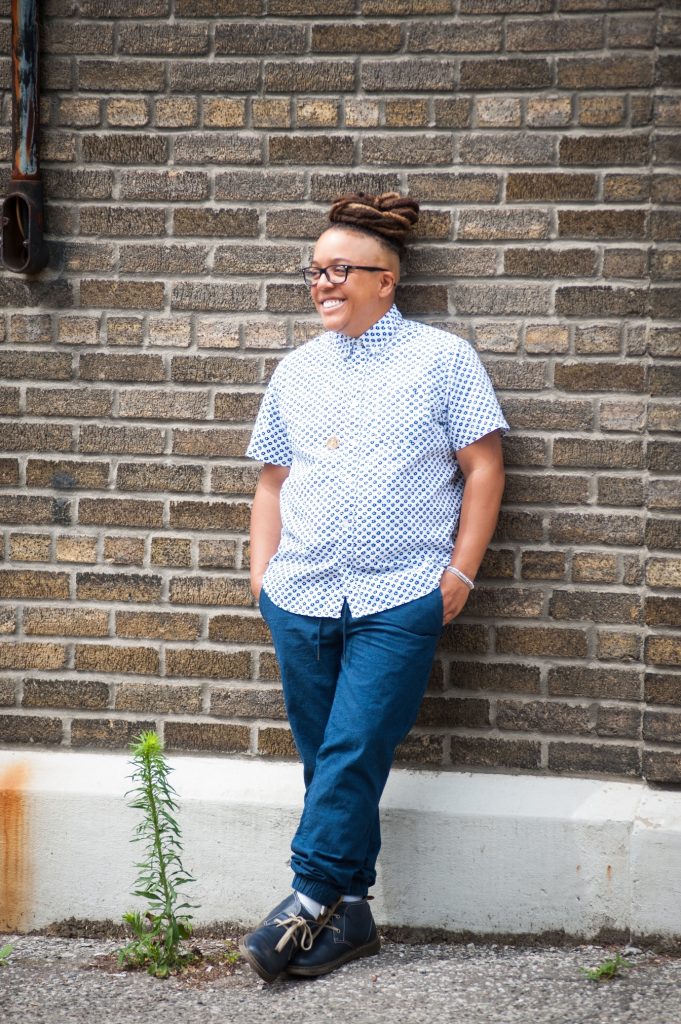 Photo Credit: Zoë Gemelli
Photo Credit: Zoë Gemelli
SMW: My style is artistic trans man meets space/time traveller! When I first transitioned (in 2001), there was a lot of pressure on trans guys to be super masculine (in the most limited definition of this word), both from gender clinics and from other trans guys. We were all encouraged/expected to dress like white hetero men sporting business casual…like everyone was a permanent cast member on The Office. Short hair, brown shoes, brown belts, boring ties. My style is definitely artsy and inspired by southern styles. My dad is from Memphis, and I love the dapper styles there! I’m an artist so that definitely inspires my sensibilities: colour, pattern and fun things are part of what makes me enjoy getting dressed!
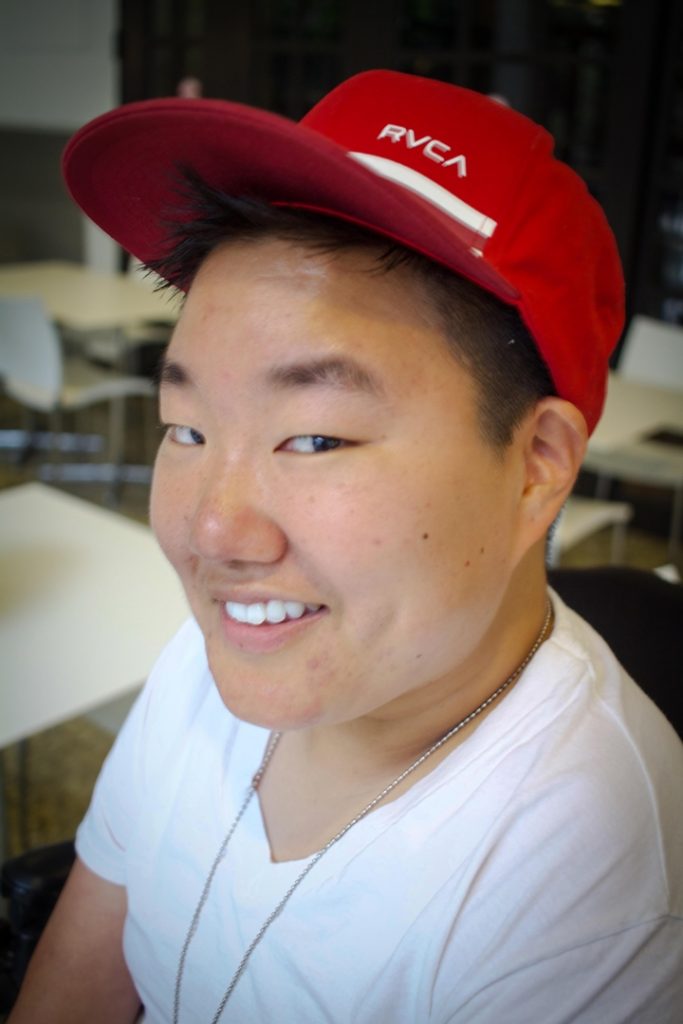 Photo Credit: Alex Knight Espinosa
Photo Credit: Alex Knight Espinosa
SG: I’ve noticed among my peers that they have an image of what they want to look like but their body won’t allow it. Images in magazines that celebrate long arms and long legs are harmful to us. I want the disability and non-disability community to know that we don’t have to follow the magazines. Make fashion work for you.
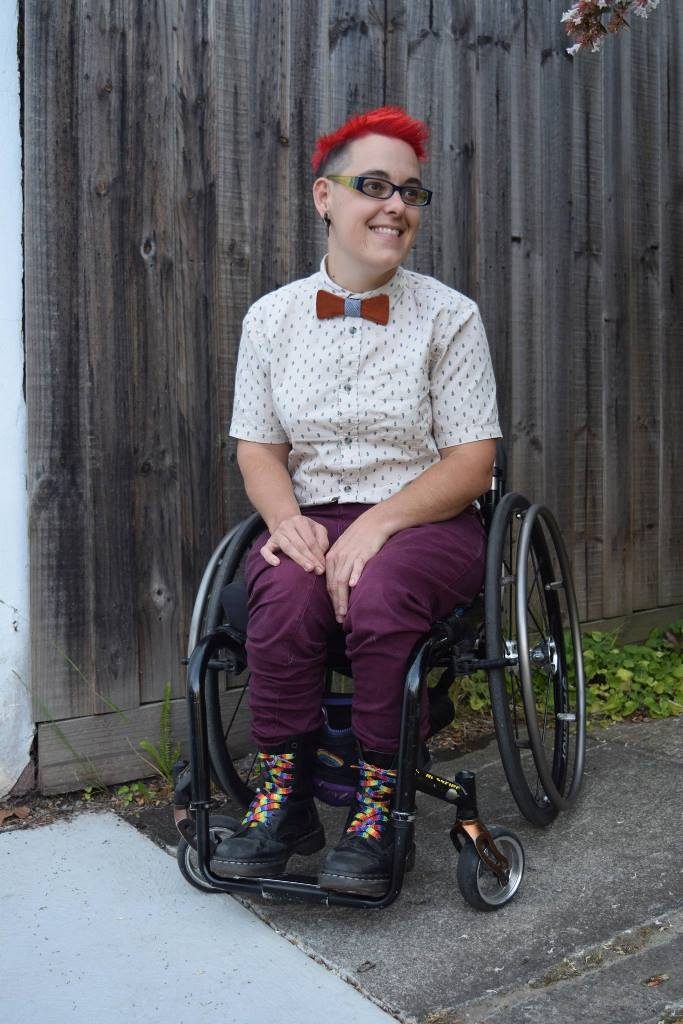 Photo Credit: Anne Standen
Photo Credit: Anne Standen
JJB: Being a manual wheelchair user I have powerful shoulders, which makes me feel sexy. My chair is silver and black, so it is sleek, minimalist and goes with all my outfits. My chair is most definitely a masculine-of-center chair. I feel really connected to my chair, like it’s an extension of my body. It carries my sweat. I live on it, fuck in it. It contains my sexuality and identity just as much as my clothes do. It’s part of me and my personal space, so when people come and start pushing without asking, or sit in my chair while I am not in it, I feel really invaded, like they are treating my body as public property. I have a big sticker on the back of a stick-figure wheelchair user being straddled by somebody, and there are some discreet touches of rainbow too.
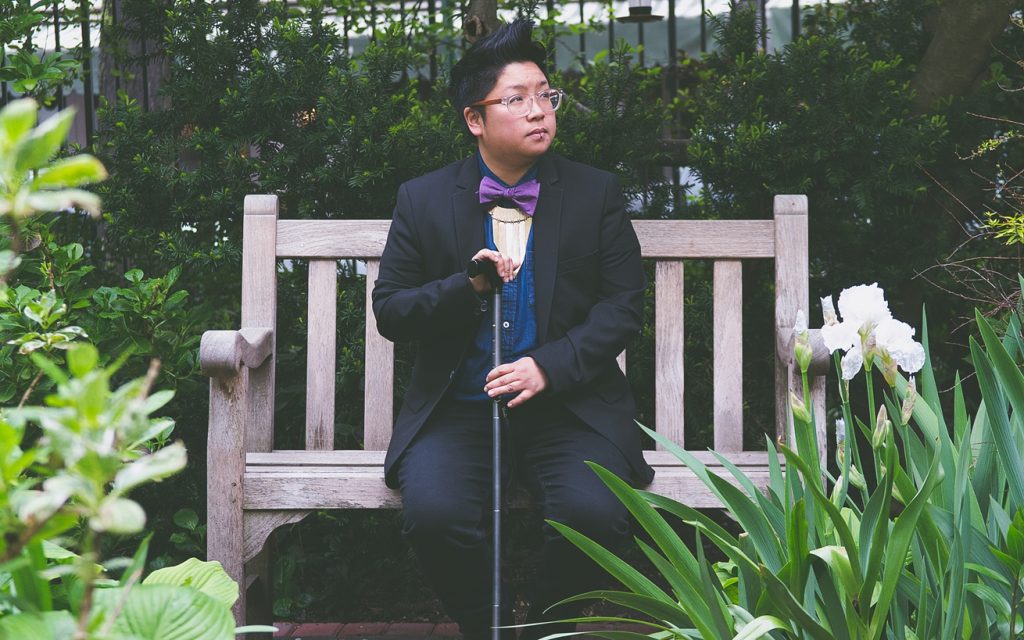 Photo Credit: Tiph Brown
Photo Credit: Tiph Brown
KUB: I think my cane compliments me in every way. My assistive device is my normal in a world that finds it out of place and degrading. My cane is a full extension of my body when I need it to be. My style is as interdependent as the support and care I need, every part has a function and moves with my whole body and spirit. In my brand of brown gender non-conformity, I can get a mixture of responses depending on my environment. Sometimes it’s calling me a “pimp,” which I do not identify with at all, but for some reason there’s an ableist assumption that people with canes are either desexualized or hypersexualized. I think my cane usage is perceived as a demonstration of weakness for my brown queer masculinity to many normie people. It is unfortunate for those people as I’ve learned to realize: (1) weakness isn’t negative; (2) my cane engages, it’s a drum beat to this earth and connects me to the ground and my environment that feels closer to the world. The stigma that informs mainstream able-bodied society that an assistive device is all that you are or not supposed to be a part of you is so binary, so narrow. My cane can humanize me and exotify me and in the wrong audience, can make me the “little brown boy” some brown Tiny-Tim-type shit, so it’s a complicated relationship.
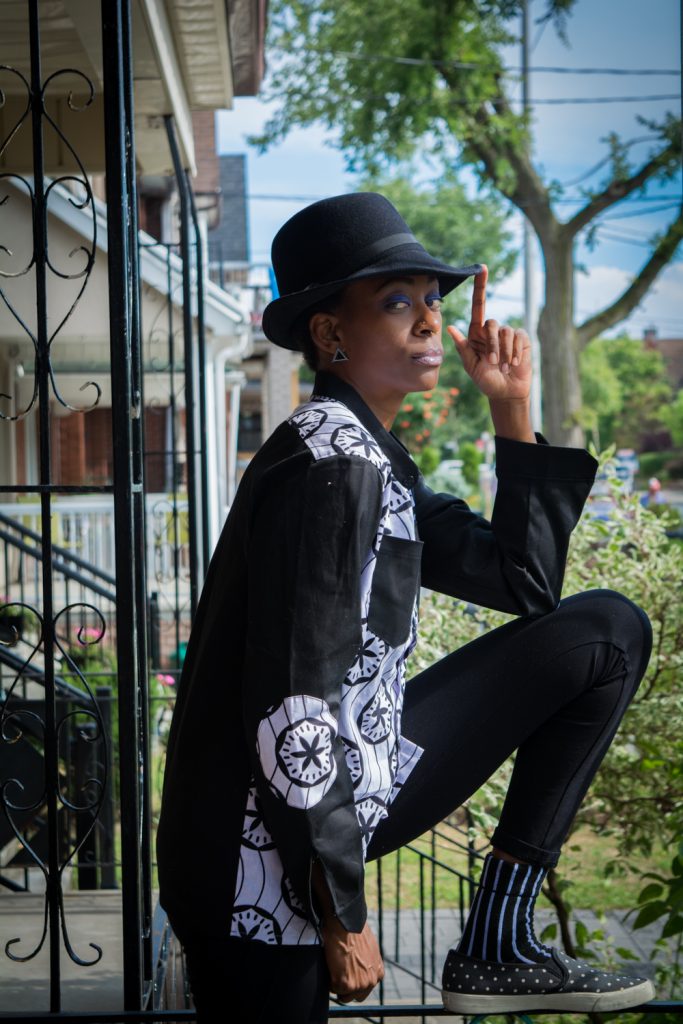 Photo Credit: Shawntol Drakes
Photo Credit: Shawntol Drakes
QT: I have seen members in my own community becoming overly aggressive and misogynistic to fit an image, though they are actually quite sensitive and kind. I’ve seen the over sexualization of the black androgynous/stud female. Which plays into ego, possession, fetishizing, and leads back to this ownership of a poc. I’ve seen QPOC trying to downplay their color, their abilities, and their strengths in order to acquire access to needed resources as well. Which can be quite demeaning and embarrassing.
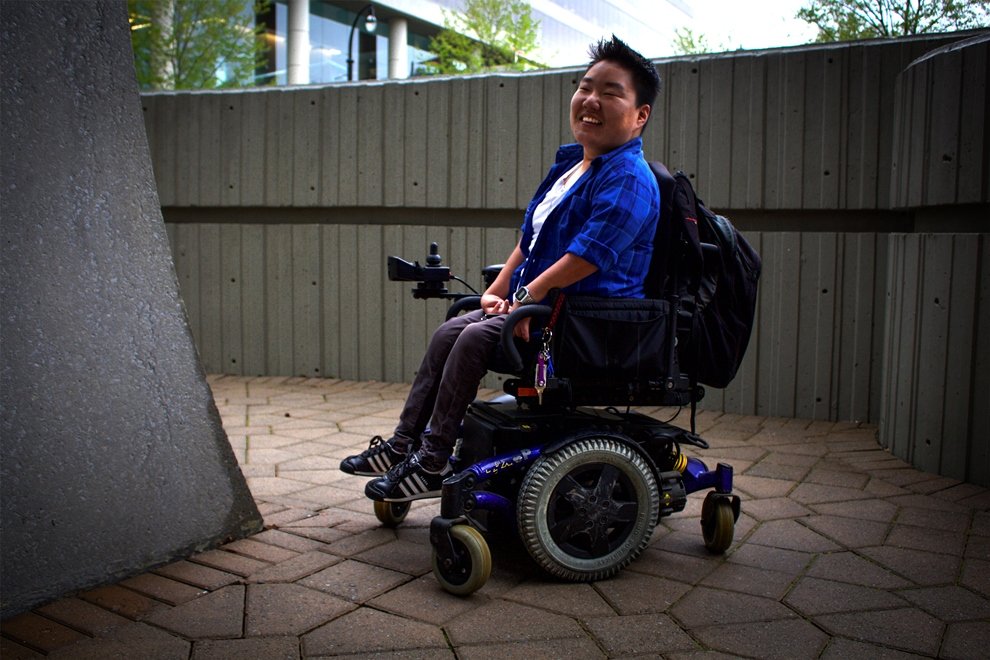
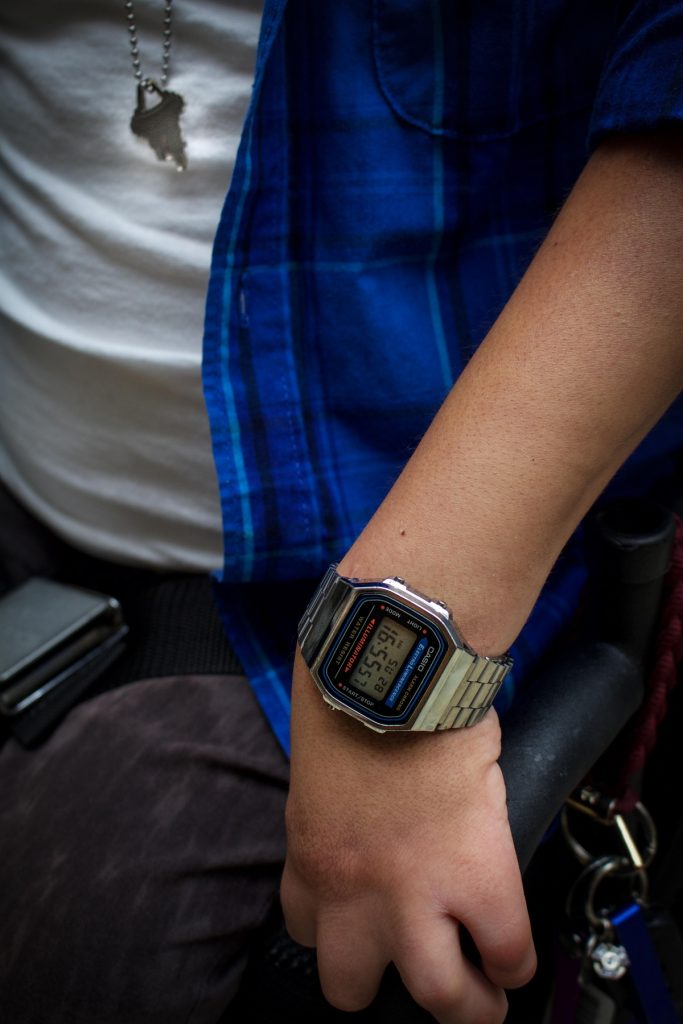 Photo Credit: Alex Knight Espinosa
Photo Credit: Alex Knight Espinosa
SG: I wear a broken key around my neck. It’s the key to my first apartment. It’s a huge symbol of independence and self-discovery for me. I used to open my door with my mouth and one day that key broke in the process. I am discovering myself still every single day and so that key means the world to me and I’m happy I found a way to incorporate it into my everyday style and masculinity. It makes me feel really confident.
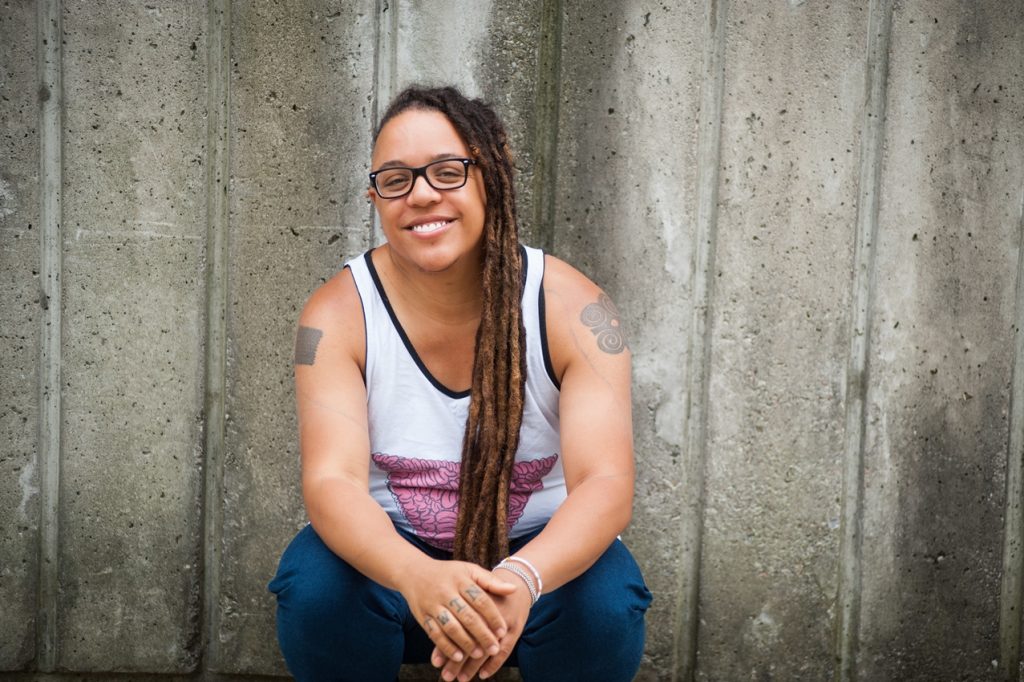 Photo Credit: Zoë Gemelli
Photo Credit: Zoë Gemelli
SMW: My pain is exacerbated by being too hot, so I definitely try to dress in clothes that are breezy and cooling in warm weather. I travel a lot for work and have started getting comfy shoes in the different places that I travel to- It is the most practical keepsake/memory from a trip and I love being able to think about these places every time I slip these shoes on. I have some sneakers that I got on a trip to Boston that I had printed with an inspirational Octavia E. Butler quote, “ All that you touch you change, All That you change changes you”. I love walking with these words wherever I go.
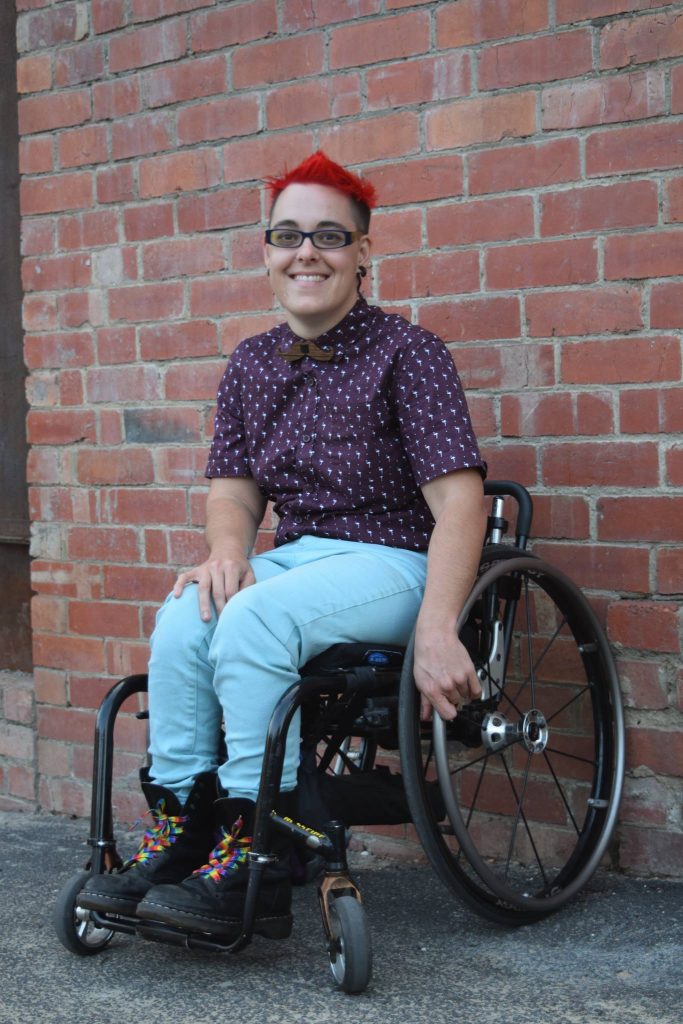 Photo Credit: Anne Standen
Photo Credit: Anne Standen
JJB: Crip queer visibility is fundamentally important in my life. Having my sexuality be visible and out and proud is core to who I am and enables me to find other queer crips. Being able to explore and express gender and sexuality, regardless of the presence of disability, is important for everyone and needs to be accessible for all. Having access to clothes that enable me to express an aesthetic that makes me feel at home in my skin and proud of my identities is fundamental to my sense of self and my politics.
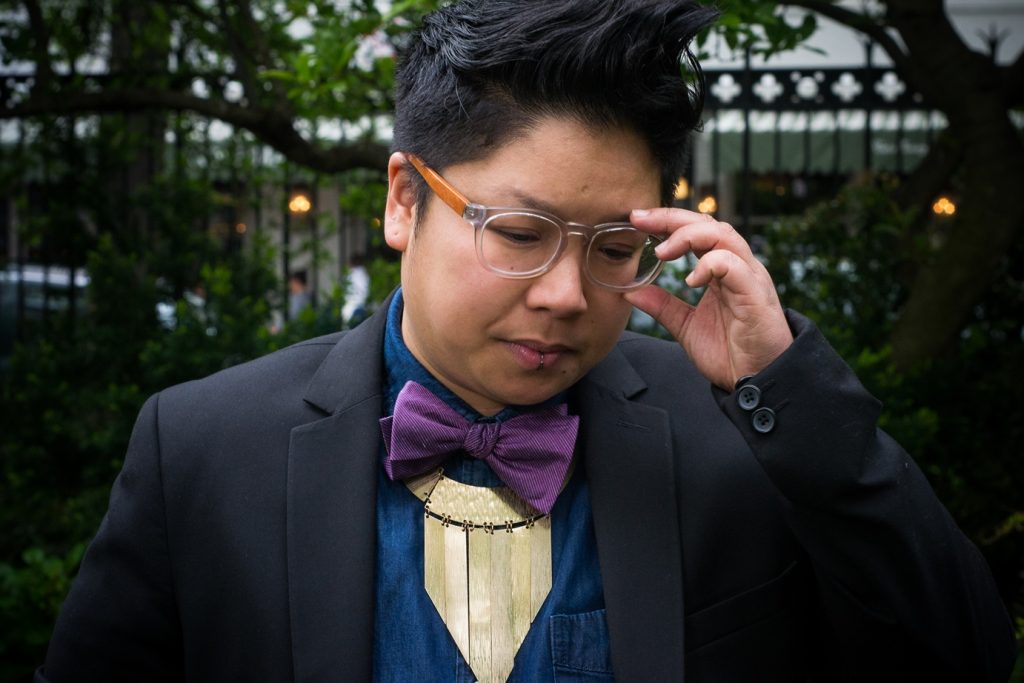 Photo Credit: Tiph Brown
Photo Credit: Tiph Brown
KUB: I get up everyday and I am told that whatever I am isn’t real. Real brown men don’t limp or wobble, real gender non-conforming people are thin or are on T, or have full time jobs, etc. Those rubrics are disastrous, so what brings me to stay alive besides my chosen family? My poetry, my food, my aesthetic.
I was raised in the U.S. empire where brown straight masculinity and femininity are vehicles entrenched to be disposable, their central purpose as brown labor is for whiteness, for white straight cis people, to maintain their wealth and capital — their houses, business, their children. Ableism check, misogyny check, racism check. The idea is that if we work hard enough, individually, we too can be successful. What happens when you cannot be a brown laborer in physical productivity? Being sick and disabled, many people defy and subvert mainstream gender expectations.
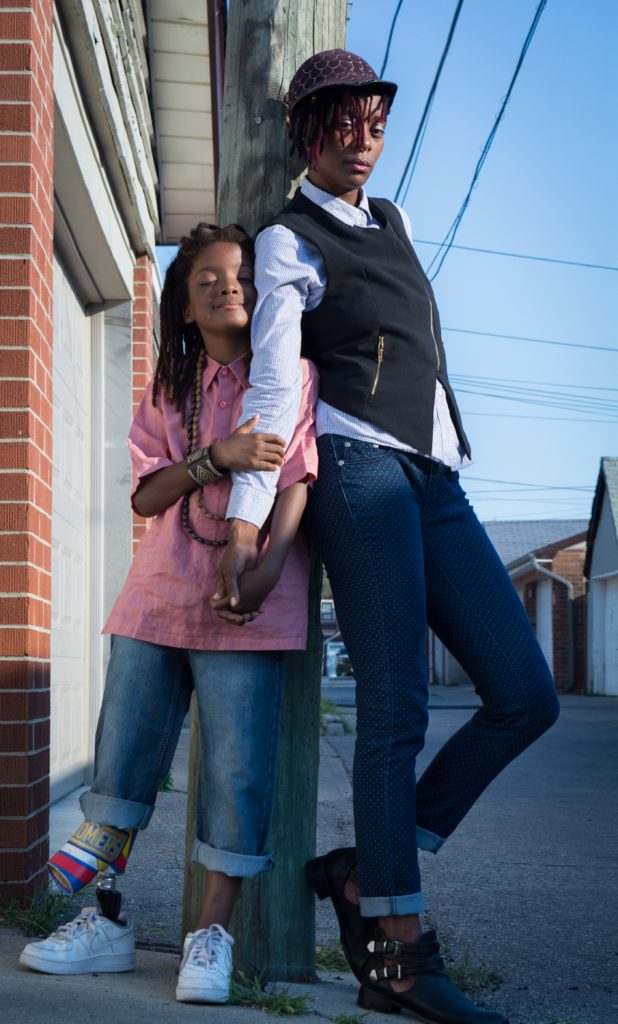 Photo Credit: Shawntol Drakes
Photo Credit: Shawntol Drakes
QT: Visibility would be major. It would mean an actual shift into inclusivity. It would mean having kids like my son, Iahnijah, recognizing someone like themselves. Which always promotes inclusion and self-pride. Visibility gives a platform for many folks to shine and give hope to; something to aspire to; something to succeed at. Embracing accessibility begins with representation. We need crip/queer visibility in key decision making roles to implement changes and act as that visual representative.
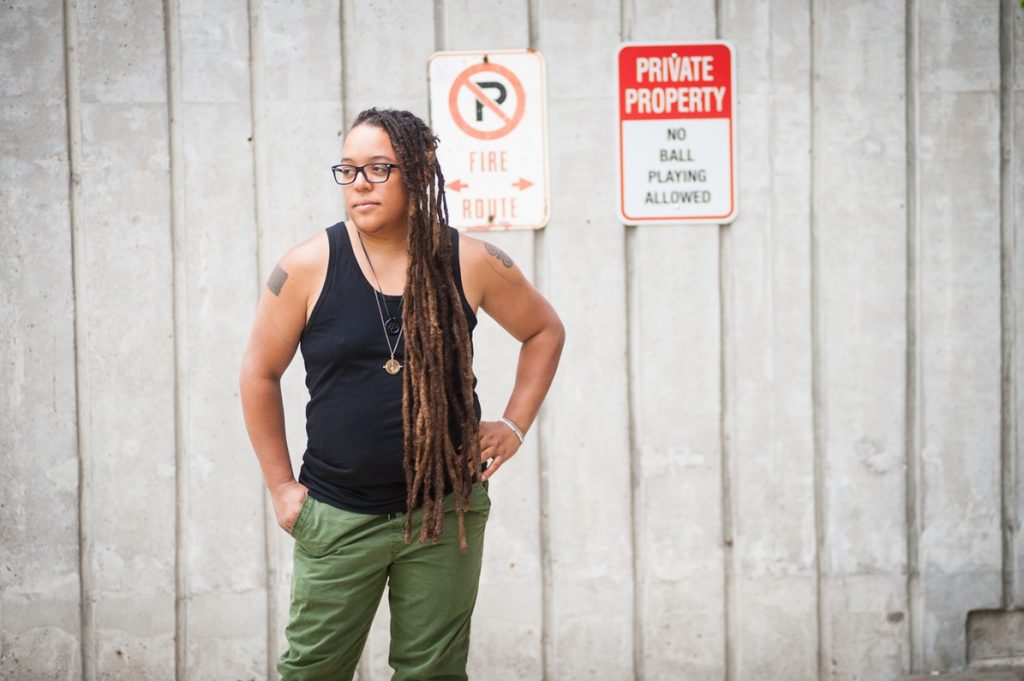 Photo Credit: Zoë Gemelli
Photo Credit: Zoë Gemelli
SMW: For me masculinity is a fluid thing-and I like to play with it as much as I can.
I love that I get to be who I want to be in this life. Ultimately, I just want to be free. I want us all to be free! Getting to transition was freeing for me, and has definitely impacted how comfortable I feel when I’m out in the world. But I need my masculinity to be on my own terms, otherwise it looses that free feeling.
I embrace clothes and accessories that make me feel joy and that have memories attached to them. I am very committed to being my true self, whatever that feels like each day. Sometimes this means having fun with nail art with my 4.5 year old, or wearing jewellery, such as this time tuner necklace that my twin and I both have (Harry Potter nerds unite!). I also choose to keep my hair very long (its almost knee length). I have a lot of hand me down suits and vests from my grandfather, and I love these. Tweed vests with dusty rose silk back panelling- so dreamy! I also have a red silk tie that my friend Lamia got me- it has a silk-screened image of Nina Simone playing the piano on the point. I cherish it!
Each day is an opportunity to have fun and think about the past, present and future.
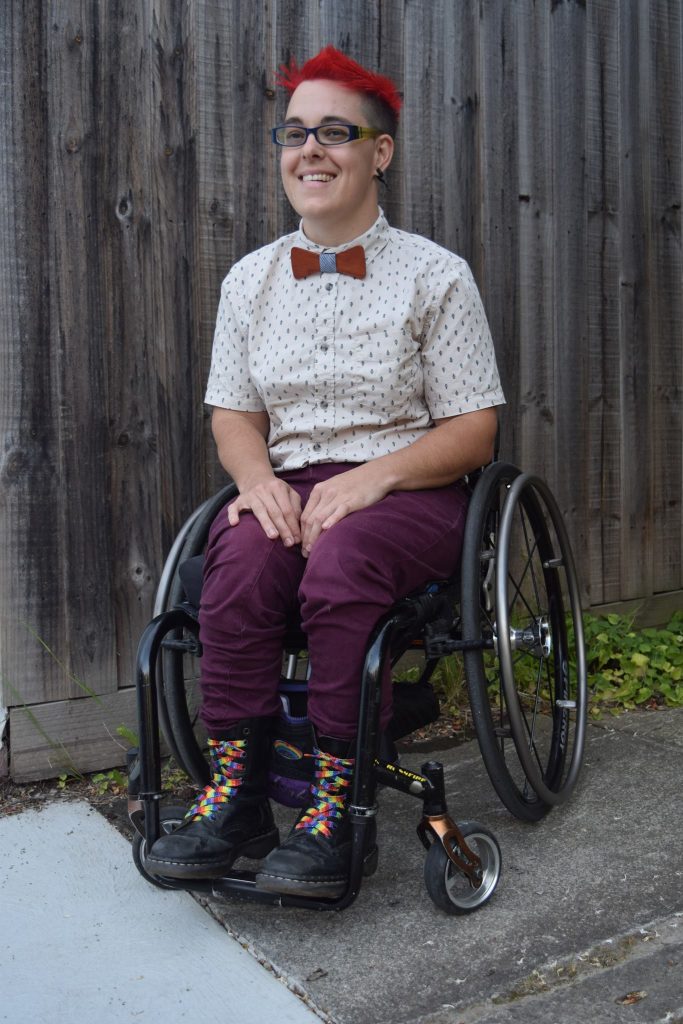 Photo Credit: Anne Standen
Photo Credit: Anne Standen
JJB: Disability allows me to live a different and unique life, to move through the world differently, to see things differently, to question and explore identity, power and explore disability as a sociopolitical question. My cripness also allows me to explore gender as so much more then a simple binary, as existing in a web of socially produced expectations and norms. For me this intersection, this way of dressing, proclaims pride, pride in my body, my queer identity. I like the way I look and dress, I like that it signals queer and that it suggests that I hold a radical politic, that I fuck and move in a non-normative way and I’m proud of it, that I am not the stereotype of disability as passive, as tragic, as non-sexual, but instead I am proud, passionate and political.
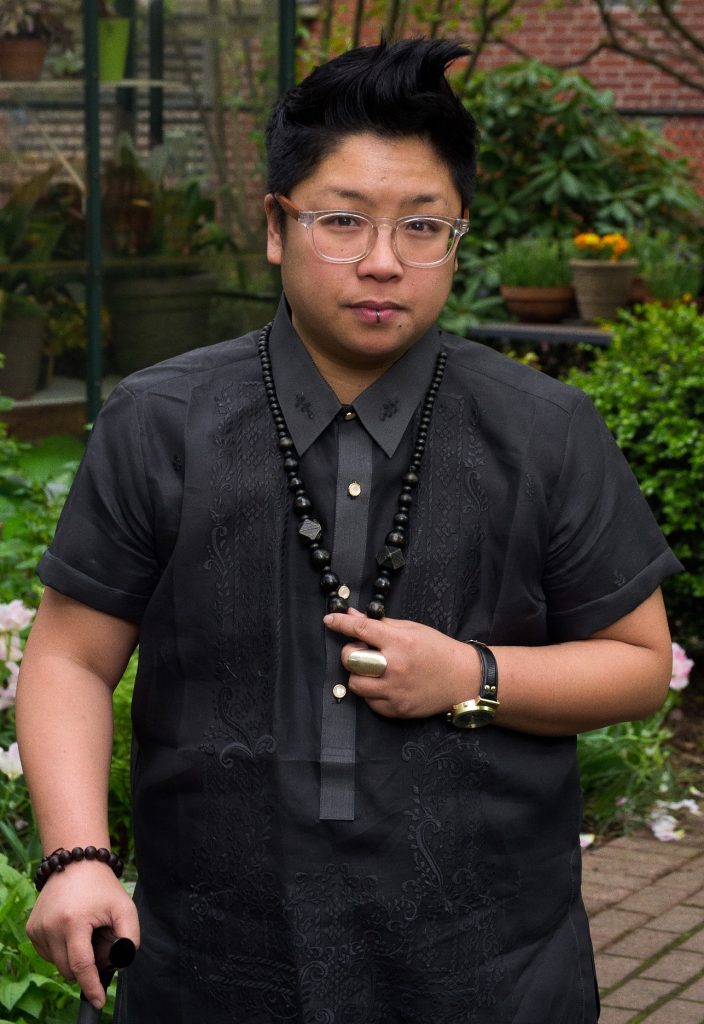 Photo Credit: Tiph Brown
Photo Credit: Tiph Brown
KUB: Most if not all the queer and transgender spaces, from book clubs to parties to fundraisers and marches, don’t consider my experience whatsoever. They still don’t. At various photo shoots and hip queer places, I am usually the one person using a mobility assistive device; I am usually the token. Likely, I am the one person used as a statement for able-bodied and disabled people alike to say, See we have a disabled person here, look! You should be here too. It has become clear to me that fashion spaces aren’t invested in fat bodies and/or disabled bodies except to meet their quota to relieve guilt and maintain a façade of diversity. This doesn’t urge deeper conversations of accessibility or desire, but smolders them into thin able-bodied convenience.
Get any fashion-forward queer media source with a top list of any kind, bet you, no one uses assistive devices, no fat people, no diasporic longing. I realize with my chosen family how normative U.S. masculinity makes for binary expectations of consumption, desirability, how articles of acceptance only go so far to cater to cis American glorification. How our bodies are not even consumable. How this approach to authentic trans displaces the transfemme, the disabled, the poor, the fat, the rural, and the awkward. How we’re exhausted by misogyny. How I am to succumb to it, impose it on others. I think the very start is understanding that decentralizing whatever is normal is critical. Additionally, many people in the disability justice community suggest that we are all disabled or sick if we aren’t already. Realize that everyone has some sort of needs, some are just dictated as burdens or limitations more than others. When fashion and the world at large can realize that access needs are meant for everyone to have a better and more engaging experience, not reserved just for the privileged few, then the resistance of ableism and arguably all forms of oppression can expand a wider and more glorious participation. Does fashion want that participation is the question.
Extra special thanks to the photographers who gave their time, care, creativity, and bold vision to this project: Tiph Brown, Alex Knight Espinosan, Zoë Gemelli, Shawntol Drakes and Anne Standen.
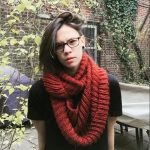 About the author: Tovah Leibowitz is a Brooklyn-based writer and filmmaker whose credits include Comedy Central’s Broad City and Spike Lee’s Lil Joints. One day she’ll leave it all behind to open a bakery filled with tiny plants and drag king dreams.
About the author: Tovah Leibowitz is a Brooklyn-based writer and filmmaker whose credits include Comedy Central’s Broad City and Spike Lee’s Lil Joints. One day she’ll leave it all behind to open a bakery filled with tiny plants and drag king dreams.
